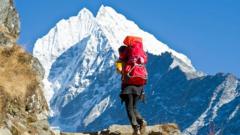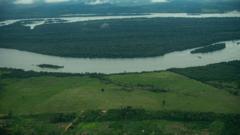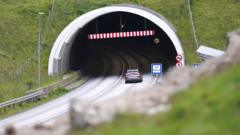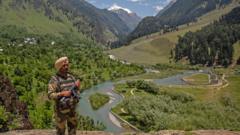Nepal's revolutionary initiative to encourage tourism in its remote mountainous regions comes as a response to soaring popularity and permit fees for the Everest climb, expected to rise significantly.
Nepal Unveils Free Climbing Initiative to Promote Remote Peaks Amid Everest Tourism Surge

Nepal Unveils Free Climbing Initiative to Promote Remote Peaks Amid Everest Tourism Surge
In a bid to redirect climbers to less traveled Himalayan areas, Nepal will offer complimentary climbs to 97 peaks as demand for Everest climbs escalates.
As tourism to Everest escalates, Nepal takes a daring step towards enhancing its unexplored landscapes, offering free climbs to 97 lesser-known peaks in an effort to both bolster local economies and alleviate pressure on its most iconic mountain.
Nepal's Tourism Department has announced that for the next two years, climbers can ascend 97 of its Himalayan peaks at no cost, mainly located in the Karnali and Sudurpaschim provinces, aiming to divert adventurous trekkers from the now notoriously crowded Mount Everest. Permit fees to climb Everest will increase to $15,000 starting September—the first hike in nearly a decade—prompting this strategic shift to highlight other impressive, yet underexplored landscapes.
Climbing fees contributed a substantial $5.9 million to the country’s economy last year, with over 75% generated from Everest climbs. However, the 97 peaks eligible for free climbing range between 5,970 meters (19,590 ft) and 7,132 meters (23,409 ft) and fall within some of the poorest provinces in Nepal. The aim is to capitalize on their "breathtaking beauty" and boost tourism into these almost untouched destinations. Himal Gautam, the director of Nepal's Tourism Department, stated that this initiative could foster job creation and income generation while strengthening local economies.
Despite the promising initiative, there remains uncertainty about infrastructure improvements and the capacity of local communities to manage an influx of climbers, considering only 68 climbers have attempted these remote peaks in the past two years, contrasting sharply with the surging 421 climbing permits for Everest in 2024 alone.
The looming concerns over overcrowded conditions, safety, and environmental impact on Everest have propelled Nepal's Supreme Court to advise limiting the number of climbing permits issued for its highest peaks. Additionally, new legislation is under consideration, stipulating that climbers must have previously summited a 7,000-meter mountain in Nepal before attempting Everest. Therefore, the 97 newly free peaks could serve as essential training grounds for aspiring climbers looking to conquer Mount Everest in the future.
Nepal's Tourism Department has announced that for the next two years, climbers can ascend 97 of its Himalayan peaks at no cost, mainly located in the Karnali and Sudurpaschim provinces, aiming to divert adventurous trekkers from the now notoriously crowded Mount Everest. Permit fees to climb Everest will increase to $15,000 starting September—the first hike in nearly a decade—prompting this strategic shift to highlight other impressive, yet underexplored landscapes.
Climbing fees contributed a substantial $5.9 million to the country’s economy last year, with over 75% generated from Everest climbs. However, the 97 peaks eligible for free climbing range between 5,970 meters (19,590 ft) and 7,132 meters (23,409 ft) and fall within some of the poorest provinces in Nepal. The aim is to capitalize on their "breathtaking beauty" and boost tourism into these almost untouched destinations. Himal Gautam, the director of Nepal's Tourism Department, stated that this initiative could foster job creation and income generation while strengthening local economies.
Despite the promising initiative, there remains uncertainty about infrastructure improvements and the capacity of local communities to manage an influx of climbers, considering only 68 climbers have attempted these remote peaks in the past two years, contrasting sharply with the surging 421 climbing permits for Everest in 2024 alone.
The looming concerns over overcrowded conditions, safety, and environmental impact on Everest have propelled Nepal's Supreme Court to advise limiting the number of climbing permits issued for its highest peaks. Additionally, new legislation is under consideration, stipulating that climbers must have previously summited a 7,000-meter mountain in Nepal before attempting Everest. Therefore, the 97 newly free peaks could serve as essential training grounds for aspiring climbers looking to conquer Mount Everest in the future.


















